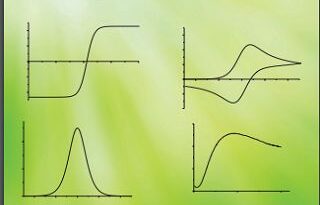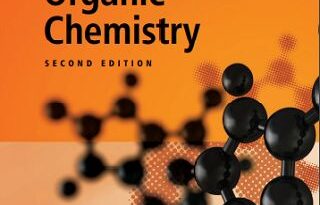Organic Chemistry a Mechanistic approach
Download Free PDF book on “Multi-Step Organic Synthesis” by Tadashi Okuyama and Howard Maskill. Organic Chemistry A mechanistic approach provides readers with a concise review of the essential concepts underpinning the subject. It combines a focus on core topics and themes with a mechanistic approach to the explanation of the reactions it describes, making it ideal for those looking for a solid understanding of the central themes of organic chemistry.
Let’s read basic detail of this book:
Book Content
Chapter 1: Atoms, Molecules, and Chemical Bonding—a Review
Chapter 2: Molecular Structure and Shapes of Organic Molecules
Chapter 3: Organic Compounds: their Functional Groups, Intermolecular Interactions, and Physical Properties
Chapter 4: Conformation and Strain in Molecules
Chapter 5: Conjugation, π-Electron Delocalization, and Aromaticity
Chapter 6: Acids and Bases
Chapter 7: Organic Reactions and the Concept of Mechanism
Chapter 8: Nucleophilic Addition to the Carbonyl Group in Aldehydes and Ketones
Chapter 9: Nucleophilic Substitution Reactions of Carboxylic Acid Derivatives
Chapter 10: Reactions of Carbonyl Compounds with Hydride Donors and Organometallic Reagents
Chapter 11: Stereochemistry and Molecular Chirality
Chapter 12: Nucleophilic Substitution Reactions of Haloalkanes and Related Compounds
Chapter 13: Elimination Reactions of Haloalkanes and Related Compounds
Chapter 14: Reactions of Alcohols, Ethers, Thiols, Sulfi des, and Amines
Chapter 15: Addition Reactions of Alkenes and Alkynes
Chapter 16: Electrophilic Aromatic Substitution
Chapter 17: Enolate Ions, their Equivalents, and Reactions
Chapter 18: Reactions of Nucleophiles with Alkenes and Aromatic Compounds
Chapter 19: Polycyclic and Heterocyclic Aromatic Compounds
Chapter 20: Reactions involving Radicals
Chapter 21: Pericyclic Reactions: Cycloadditions, Electrocyclic Reactions, and Sigmatropic Rearrangements
Chapter 22: Rearrangement Reactions involving Polar Molecules and Ions
Chapter 23: Organic Synthesis
Chapter 24: Chemistry of Biomolecules
Chapter 25: Structural Determination of Organic Compounds
| Book Name | Organic Chemistry A Mechanistic approach |
| Author | Tadashi Okuyama and Howard Maskill |
| Category | Chemistry |
| Book Language | English |
| Publisher | OXFORD University Press |
| Pages | 681 |
| ISBN | 978–0–19–969327–6 |
| Country | United Kingdom |
| Book Size | 10.8 MB |
Organic Chemistry a Mechanistic approach PDF Download
Organic Chemistry: A Mechanistic Approach by Tadashi Okuyama and Howard Maskill offers a comprehensive exploration of organic chemistry, emphasizing the underlying mechanisms of reactions. This approach aids in fostering a deep understanding of the subject, moving beyond rote memorization.
Key Features:
-
Mechanistic Focus: The text emphasizes reaction mechanisms, providing insights into the ‘how’ and ‘why’ of organic reactions, which enhances conceptual clarity.
-
Structured Content: Beginning with foundational topics like chemical bonding and molecular structures, the book systematically progresses to more complex subjects, ensuring a logical learning progression.
-
Educational Tools: Incorporates full-color illustrations, sidebars, in-text worked examples, and end-of-chapter problems to facilitate active learning and self-assessment.
Table of Contents:
-
Chemical Bonding and Molecules
-
Molecular Structure and Shapes of Organic Molecules
-
Organic Compounds: Functional Groups, Intermolecular Interactions, and Physical Properties
-
Conformation and Strain in Molecules
-
Conjugation, π-Electron Delocalization, and Aromaticity
-
Acids and Bases
-
Organic Reactions and the Concept of Mechanism
-
Nucleophilic Addition to the Carbonyl Group in Aldehydes and Ketones
-
Nucleophilic Substitution Reactions of Carboxylic Acid Derivatives
-
Reactions of Carbonyl Compounds with Hydride Donors and Organometallic Reagents
-
Stereochemistry and Molecular Chirality
-
Nucleophilic Substitution Reactions of Haloalkanes and Related Compounds
-
Elimination Reactions of Haloalkanes and Related Compounds
-
Reactions of Alcohols, Ethers, Thiols, Sulfides, and Amines
-
Addition Reactions of Alkenes and Alkynes
-
Electrophilic Aromatic Substitution
-
Enolate Ions, Their Equivalents, and Reactions
-
Reactions of Nucleophiles with Alkenes and Aromatic Compounds
-
Polycyclic and Heterocyclic Aromatic Compounds
-
Reactions Involving Radicals
-
Pericyclic Reactions: Cycloadditions, Electrocyclic Reactions, and Sigmatropic Rearrangements
-
Rearrangement Reactions Involving Polar Molecules and Ions
-
Chemistry of Biomolecules1
-
Structural Determination of Organic Compounds
This structured approach ensures that readers build a solid foundation before delving into complex reactions and concepts.
Author Backgrounds:
-
Tadashi Okuyama: Professor Emeritus at the University of Hyogo, Japan, with research focusing on organic reaction mechanisms, acid-base catalysis, and heteroatom chemistry. He has authored multiple textbooks in Japanese and translated several English texts for the Japanese audience.
-
Howard Maskill: Guest Member of Staff in the School of Chemistry at Newcastle University, UK, specializing in the mechanisms of organic reactions in solution.
-
Availability:
The book is available for purchase through various platforms:
-
Amazon:
-
Oxford University Press:
-
Additionally, some educational platforms may offer free downloads or previews:
-
Chemistry.com.pk:
This resource is particularly beneficial for students and professionals seeking a mechanistic understanding of organic chemistry, providing both theoretical insights and practical problem-solving techniques.


